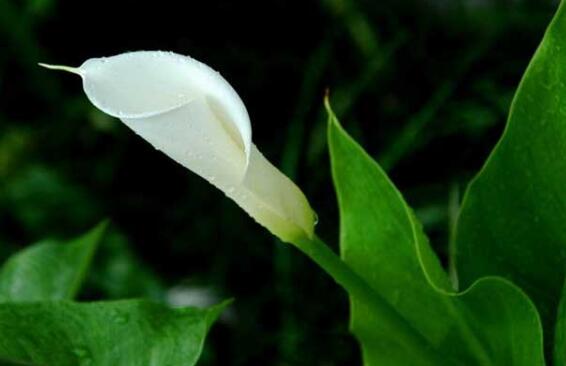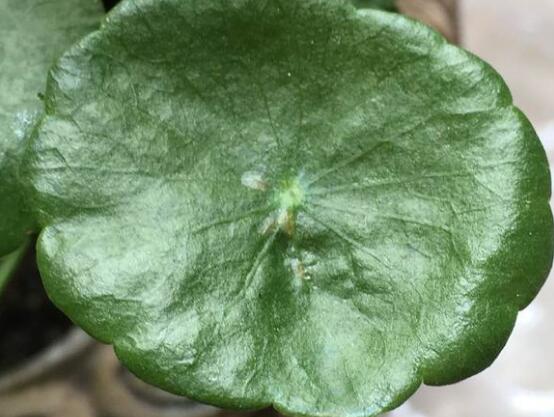Can tulips be cut? the survival rate of three propagation methods / cutting of tulips is not high.
Tulip, flower friends should be no stranger, it is the national flower of the Netherlands, has a strong ornamental, attracting countless tourists to watch every year. In life, the propagation of flowers, we generally use cuttings, that tulips can be cuttings? According to the inquiry, there are three main propagation methods of tulips, namely, ball propagation, sowing reproduction and cutting propagation. Next, let's take a look at it in detail.
Can tulips be cut? yes.

In the cultivation method of tulips, we know that tulips have high requirements for water, and the soil should maintain a certain degree of moisture. In addition, on the Internet, we can also see many flower friends in hydroponic tulips, so tulips can be cut? The answer is yes, the reason why few people use it, because its survival rate is very low, so I will not introduce it in detail here.
Second, the propagation method of tulip, cutting / sowing / dividing ball.
In addition to cutting, the propagation methods of tulips include sowing and dividing balls, and their survival rate is very high, so they are more commonly used in life. However, sowing is suitable for planting a large number of plants, so flower friends generally master bulb reproduction, and we will move on to the specific methods.
(1) bulbous propagation of tulips.
Dividing balls, one of the breeding methods of tulips, which is commonly used in daily life, can be operated by ordinary flower friends. The specific methods are as follows:
① ball object
If you want to divide the bulb to reproduce, it is very important to select the object of the bulb. Flower friends can choose the mother plant that was planted that year and grew after one season.
② starts to score the ball.
After one season of growth, the mother plant will be divided into 1-2 large bulbs and 3-5 small bulbs. At this time, flower friends can reproduce separately according to the size of the bulb, in which the big bulb can blossom in the same year, and the small bulb can blossom after 1-2 years.
(2) sowing and propagation of tulips.
In the breeding method of tulips, in addition to cutting and dividing balls, there is another method, that is, sowing, but it is suitable for a large number of planting, mostly used to cultivate new varieties, so the general flower friends only need to know. Specific methods:
First of all, choose to sow the seeds, usually go to the florist to buy. Because it is planted in large quantities, it can be sown in a mixture of multiple categories, which is more ornamental. Using sowing and reproduction, you can sow seeds in indoor pots in October, cover them outdoors with plastic film, and sprout the following spring. It can blossom from March to April.
III. Conservation and propagation of tulips
The above is the breeding method of tulips, as long as a little careful, the operation can be successful. However, completing the above steps is only part of reproduction, because post-breeding care is very important, and if you don't pay attention, the previous work will be wasted. With regard to the conservation and reproduction of tulips, there are the following points:
1. Temperature: Tulip is a bulbous plant, the growth of root system is important. The root temperature of tulip should be above 5 ℃ and below 14 ℃, especially 10 ℃. So friends who want to improve the survival rate of reproduction must pay attention.
two。 Lighting: after reproduction, we should pay attention to the light, because in the sun, seed germination will be inhibited, in planting should be deep planting and moderate shading, to avoid the impact of sunlight on the seed.
Conclusion: after reading the above, you should know something about breeding tulips. In fact, as long as the operation is careful, the survival rate of tulip reproduction is very high. Even beginners can try to sow and reproduce tulips. I hope everyone can breed beautiful tulips.
Key points of sowing and cutting Propagation of Liriodendron mandshurica
Liriodendron mandshurica, also known as Liriodendron mandshurica, has a very special shape and has a good name of "Chinese tulip tree". It is a very precious street tree and courtyard ornamental tree in China. However, the breeding of Liriodendron mandshurica is difficult, and the survival rate is relatively low, so the popularization rate in our country is getting lower and lower.
Liriodendron chinense
I. seed propagation
Reproduce with seeds. Artificial pollination must be used. After seed collection and selection in autumn, the seeds were accumulated in the middle layer of wet sand for the winter, and sowed and raised seedlings in the following spring. In the third year, the seedling height is more than 1 meter and can be planted in the nursery. Woodland and landscaping land must choose places that are deep, fertile and well drained. The root should be protected when transplanting.
1. Seed collection
The mother tree should choose 15-30-year-old trees with strong growth. The seeds of Liriodendron mandshurica mature in October and should be harvested when the fruit is brown. After cutting off the fruit branches, leave them in the shade for about 10 days, then let them dry in the sun for 2 to 3 days, wait for the winged nutlets to separate themselves, remove impurities, and store them in a cloth bag.
2. Raising seedlings
The nursery land should choose sandy loam which is sheltered from the wind and sunny, the soil is deep, fertile, moist and well drained. Turn deeply in late autumn and early winter, apply basic fertilizer to level off the following spring, dig a good drainage ditch, build a high bed, and the direction of the seedbed is east-west. There are two ways of raising seedlings: sowing and cutting.
Sowing seedlings using strip sowing, strip spacing 20~25cm. Sowing amount 10~15kg per mu. The seeds were sown in early March, and then covered with fine soil and straw. Generally, seedlings emerge after 20-30 days, and then uncover the grass, pay attention to timely ploughing and weeding, moderate shading, timely irrigation and fertilization. The height of 1-year-old seedlings can reach 40cm.
3. Planting
It is usually planted in the first and middle of March. It should be chosen in the middle and lower part of the shady valleys and hillsides. Garden greening and street tree cultivation should choose areas with deep, fertile and moist soil. The planting land was cleaned completely at the end of autumn and the beginning of winter, and the hole diameter was 60~80cm, deep 50~60cm. After fertilizing and returning to the soil in the first and middle March of the following year, the seedlings were usually 2 years old. After seedling emergence, attention should be paid to prevent the water loss of seedlings and protect the root system. As far as possible, the row spacing should be 2 × 2m~2 × 3m.
4. Management
After planting, weeding, fertilization and soil cultivation were carried out in time, and pruning was carried out at the end of autumn and the beginning of winter every year. And pay attention to the control of diseases and insect pests. The main disease of Liriodendron mandshurica is sunburn. The main pests are leaf roll moth, big bag moth and so on. Leaf roll moths can be controlled by artificially cutting off withered shoots, killing larvae and pupae, or spraying 1000 times of dichlorvos emulsion at the adult stage. The large bag moth can be controlled by removing the insect bag manually, or by spraying larvae with 800 / 1000 times of 90% trichlorfon.
2. Cutting propagation
In addition to sowing and raising seedlings, Liriodendron can also be raised by cutting. In the south of Henan Province, hardwood cuttings are often used, and the method of raising seedlings is easy to learn and easy to master. In late February of the following year after defoliation, strong mother trees were selected and thick branches of more than 5mm were cut as cuttings. The ear length was about 15 cm. Each ear should have 2 to 3 full buds, cut flat at the lower end, and inserted into the soil at a row spacing of 20 cm × 30 cm. Soak in rooting powder for about 30 minutes before cutting. Cuttings should be inserted with picking, shading facilities should be provided after insertion, and water spraying should be done frequently. The seedling rate of this method can reach 80%, and the annual seedling can grow to more than 80 cm, which can also be afforestation.
Can geranium be cut with water? cutting method and time of geranium
Geranium, also known as stone red, sunset red, hydrangea, sunflower, into the red and so on, belongs to the family Niu Niu seedlings, it has more than 230 kinds of perennial fleshy in the world, and sub-shrubs or shrubs. Geraniums are mainly produced in southern Africa and are now grown in all parts of the world. Its old plant is semi-lignified, while the young plant is a succulent herb, which is used as a flower decoration plant in the West. It often appears in continental Europe, as well as in Germany, Austria and other countries. It is generally used to decorate the windowsill. It has a very good effect. Next, let's take a look at whether geranium can be cut with water, as well as the method and time of geranium cutting. [morphological characteristics of geranium] Pelargonium is a perennial herb, its height is generally 30-60cm, and the stem is very tall and straight, the base is woody, the upper part is fleshy, multi-branched or unbranched, and the nodes are very obvious. The leaves are alternate, the stipules are triangular or reniform, the length of the petiole is 7-15mm, the length of the petiole is 3-10cm, the growth of pilose or glandular hairs, and the shape of the leaf is rounded. Inflorescences are umbrella-shaped leaf axils, flowers are very colorful when in full bloom, the total pedicel is growing on the leaves, the length of the pedicel is 3-4mm, it is erect, the petals are pink, white, red, orange and so on, the flower color is very rich. Its florescence is usually from May to July, while its fruiting period is from June to September. [growth habits of geranium] the geranium likes to grow in a sunny environment, it likes to grow in a warm winter and cool summer climate, and the suitable temperature in winter is 10-15 degrees Celsius, while at night the temperature is suitable at 8 degrees Celsius, so that it can blossom normally. The geranium is suitable for growing at a temperature of 15-20 degrees Celsius. It likes to grow in a dry climate and is moist. It should be watered in winter and keep it dry and wet. If the soil is moist, the texture of the stem will be very tender, which is not conducive to flowering or new branches blooming. If the soil is moist for a long time, it will cause the plant to grow too much. Generally, the growing part of the flower branch is moved up, and the leaves are gradually yellow, and then fall off slowly. It should be cultured in a sunny environment in winter, if the lack of light will cause the stem leaves to grow excessively, its pedicel will be relatively soft, and the inflorescence will be poorly developed, the flowering will not be bad, and the flowers will taste bitter early. Geraniums do not like to grow in too fertile soil, otherwise it will cause adverse flowering, thus affecting the ornamental value. [cutting method and time of geranium] 1. Geranium cutting method: the cutting season of geranium is usually carried out from March to June in spring, so it is safe to spend the summer. Geraniums grow very fast when they are not hot or cold. In cutting geranium, generally choose fine yellow sand to culture, it is mainly the use of water, and then put a layer of fine sand on it, which is very conducive to water conservation. Choose cuttings before cutting geraniums and choose healthier cutting fields. Generally, there will be 3-4 branches at the top, then cut obliquely from the last leaf node, trim the cut a little bit, and electricity part of the leaves. This can check the evaporation and consumption of water. two。 Geranium cutting time: the cutting time of geranium is usually when the cuttings are trimmed, do not proceed immediately, you need to put the cuttings in a cool place for a few hours, and then you can cut them. After cutting, use tools to press the soil a little bit, and then use a water spray container to spray. The season of cutting is generally from March to June, and the safer the summer is when cutting is from April to May. [can geranium be cut with water?] the geranium is a kind of plant with very good ornamental value, and its reproductive ability is also very strong. It can grow as long as it needs some water or soil. The main cutting methods used are soil cutting and water cutting. Generally, the survival rate of water cutting is much higher than that of soil cutting. And the ornamental value of water geranium is much better than soil planting, most people first water insertion, and then soil insertion, this stage is the geranium needs a process of adaptation. Therefore, the fastest day can be inserted with water, and the way of water insertion is very simple and convenient.
More related information what does tulip stand for? banyan tree picture of banyan tree planting technology of water spinach
- Prev

How do calla lilies reproduce? the survival rate of three propagation methods / ramets of calla is high.
Calla lilies, a pure white flower with beautiful plant shape, is definitely a good choice to keep a pot at home. However, many flower friends are not satisfied, because a pot of calla lilies flowering is too monotonous, more pots of flowers can be beautiful, and this requires us to master the propagation methods of calla lilies.
- Next

What to do with the long worms of Artemisia angustifolia? a complete collection of prevention and control methods of diseases and insect pests
As people pay more and more attention to their health, many people begin to raise small plants at home, and because the efficacy of money grass is amazing, raising money grass has become a good choice. However, in the process of raising Artemisia angustifolia, diseases and insect pests cannot be escaped, so what about the worms? To this
Related
- Fuxing push coffee new agricultural production and marketing class: lack of small-scale processing plants
- Jujube rice field leisure farm deep ploughing Yilan for five years to create a space for organic food and play
- Nongyu Farm-A trial of organic papaya for brave women with advanced technology
- Four points for attention in the prevention and control of diseases and insect pests of edible fungi
- How to add nutrient solution to Edible Fungi
- Is there any good way to control edible fungus mites?
- Open Inoculation Technology of Edible Fungi
- Is there any clever way to use fertilizer for edible fungus in winter?
- What agents are used to kill the pathogens of edible fungi in the mushroom shed?
- Rapid drying of Edible Fungi

